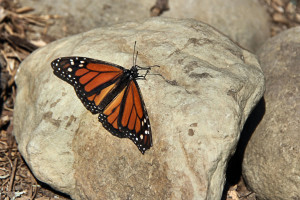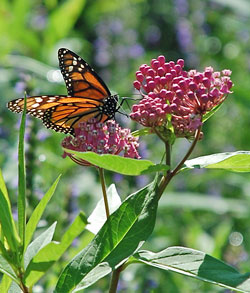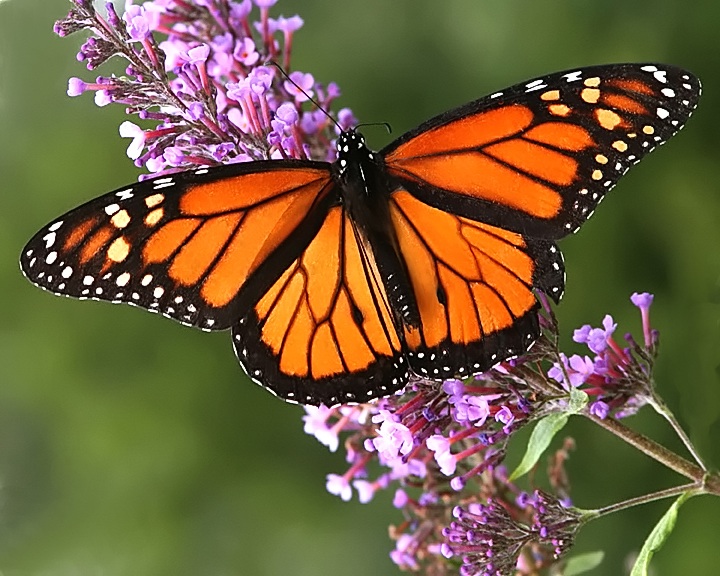Thinking back to my childhood memories of summer, it seemed the butterflies were as plentiful as the endless summer days. Those recollections might be somewhat tainted by nostalgia, but it is true that butterfly populations do seem to be on the decline. It is estimated that the population of the Monarch Butterfly, the orange and black king of the garden butterfly, is only 3% of what it once was. There are a host of reasons that contribute to this situation, but one of the primary reasons is because of habitat destruction. Developing your residential landscape to accommodate some of the needs of a butterfly habitat can help reverse the trend of disappearing butterflies and bring a little life to your garden.
 There are a couple of basic physical features to first consider when landscaping to attract butterflies. Butterflies are most active on calm, sunny days, so a location with a lot of bright sunshine is important. And providing a windbreak of shrubs can help create the right environment and provide shelter for windy or cool days. Flat rocks that soak up the sun make a perfect perch for a butterfly, so adding a few to your garden will help make the space a little more inviting.
There are a couple of basic physical features to first consider when landscaping to attract butterflies. Butterflies are most active on calm, sunny days, so a location with a lot of bright sunshine is important. And providing a windbreak of shrubs can help create the right environment and provide shelter for windy or cool days. Flat rocks that soak up the sun make a perfect perch for a butterfly, so adding a few to your garden will help make the space a little more inviting.
Once you have the right physical layout, you will want to provide the right plants for food sources. An important thing to remember is the butterfly is only the adult stage of the insect. Providing the right food source for the caterpillar is just as important and feeding the adult butterfly. If you have the right plants to support the caterpillar you will be encouraging the presence of butterflies as well. One plant of particular  importance is the milkweed (Asclepsias spp.). This is the only food source for the Monarch Butterfly larvae and the loss of this particular plant from the landscape has been a primary cause of the decline of this species. There are number of native species of milkweed that can be grown in your garden and their beautiful blooms make them attractive. Keep an eye out for butterflies in your area and find out what “host plant” that species needs for ideas of what to plant in your garden.
importance is the milkweed (Asclepsias spp.). This is the only food source for the Monarch Butterfly larvae and the loss of this particular plant from the landscape has been a primary cause of the decline of this species. There are number of native species of milkweed that can be grown in your garden and their beautiful blooms make them attractive. Keep an eye out for butterflies in your area and find out what “host plant” that species needs for ideas of what to plant in your garden.
Adult butterflies are much more easily satisfied. Almost any blooming plant, trees, shrubs, perennials, and annuals will provide nectar for butterflies. What is important to consider is color and scent, and brightly colored fragrant flowers planted in groupings are beacons for passing butterflies. Because butterflies are active from spring until late summer, plant a variety of plants with different bloom times. Redbuds, lilacs, and dogwoods in the spring, phlox, liatris, butterfly bush in mid-summer and coneflower, goldenrod, and aster for early fall. Consider leaving perennial plants up for the winter instead of cutting them to the ground in fall. The egg and pupa stage of the butterfly will overwinter in this vegetation and you may be throwing out next year’s butterflies with this year’s perennials. Finally, limit your use of pesticides! You’re not only killing detrimental insects, but butterfly larvae as well and by doing so you are eliminating food sources for birds.

